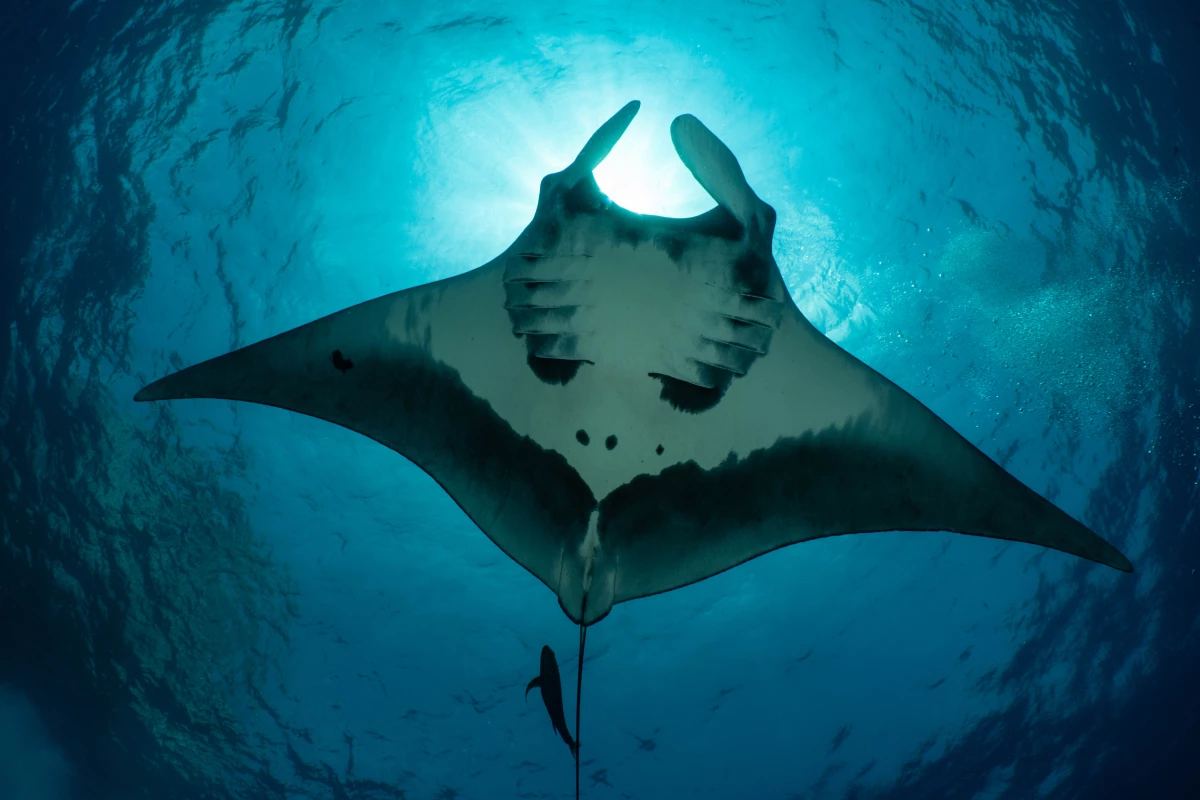Researchers have discovered that oceanic manta rays, known scientifically as Mobula birostris, dive to depths exceeding 1,200 meters (approximately 3,900 feet) not for food, but to navigate the ocean using natural cues. This groundbreaking study, led by an international team from Peru, Indonesia, and New Zealand, reveals a sophisticated behavior among these majestic creatures as they traverse vast stretches of open water.
The study involved tagging 24 individual manta rays at three locations: Raja Ampat in eastern Indonesia, off the coast of Tumbes in Peru, and near Whangoroa in New Zealand. The researchers collected an impressive 2,705 tag-days of data over the course of the research, demonstrating the mantas’ ability to dive to extreme depths and their unique navigation methods.
Dr. Calvin Beale, the first author of the study and a PhD graduate from Murdoch University, stated, “We show that, far offshore, oceanic manta rays are capable of diving to depths greater than 1,200 meters, far deeper than previously thought.” The scientists found that these dives are often linked to increased horizontal travel, suggesting a potential role in gathering environmental information.
Over the study period, the researchers noted that manta rays dived to extreme depths on 79 occasions, with a maximum recorded dive of 1,250 meters (0.78 miles). Significantly, almost all of these deep dives occurred off the coast of New Zealand, where the underwater topography transitions sharply from shallow to deep waters. Each manta ray undertook its first extreme dive shortly after moving beyond the continental shelf, indicating that these dives are not conducted for hunting or escaping predators.
Instead, the mantas descended in a staggered pattern, spending minimal time at their maximum depth before ascending in a similar manner. Following these dives, they often traveled significant distances, covering up to 200 kilometers (124 miles) in subsequent days. Researchers believe that the mantas are utilizing natural environmental signals—such as changes in magnetic fields, oxygen levels, temperature, and light—as navigational aids.
“By diving down and ‘sampling’ these signals, they could build a mental map that helps them navigate across vast, featureless stretches of open ocean,” Beale explained. The findings suggest that these deep dives occur primarily as the mantas leave the continental shelf and begin their northward migration toward warmer waters, such as those found around Fiji and Tonga.
Dr. Mark Erdmann, Shark Conservation Director at Re:wild and a co-author of the study, added that the deep dives may serve the purpose of refining the mantas’ navigational accuracy. “The study shows that immediately after deep dives, New Zealand oceanic mantas spend a fair bit of time warming up on the surface, likely recovering from the thermal stress of these very cold deep waters,” Erdmann noted.
The research emphasizes the crucial role of deep ocean environments in the migratory patterns of these endangered rays. With the majority of extreme diving activity concentrated off New Zealand, the findings highlight the need for further investigation into how underwater topography impacts manta ray behavior.
The researchers caution that while their study presents significant insights, it is based on a relatively small sample size and recorded snapshots of behavior rather than continuous observations. “Understanding the nature and function of deep dives helps explain how animals cross vast, seemingly featureless oceans and connect ecosystems thousands of kilometers apart,” Beale stated.
This study not only contributes to the understanding of manta rays but also underscores the importance of international cooperation in conserving migratory species. As researchers continue to explore the mysteries of the deep ocean, it remains crucial to recognize the ecological significance of these environments, which are vital for the survival of numerous marine species.
The findings of this study were published in the journal Frontiers in Marine Science, highlighting the critical need for ongoing research in areas of the ocean that are still poorly understood yet play a significant role in regulating Earth’s climate and supporting global fisheries.






































































